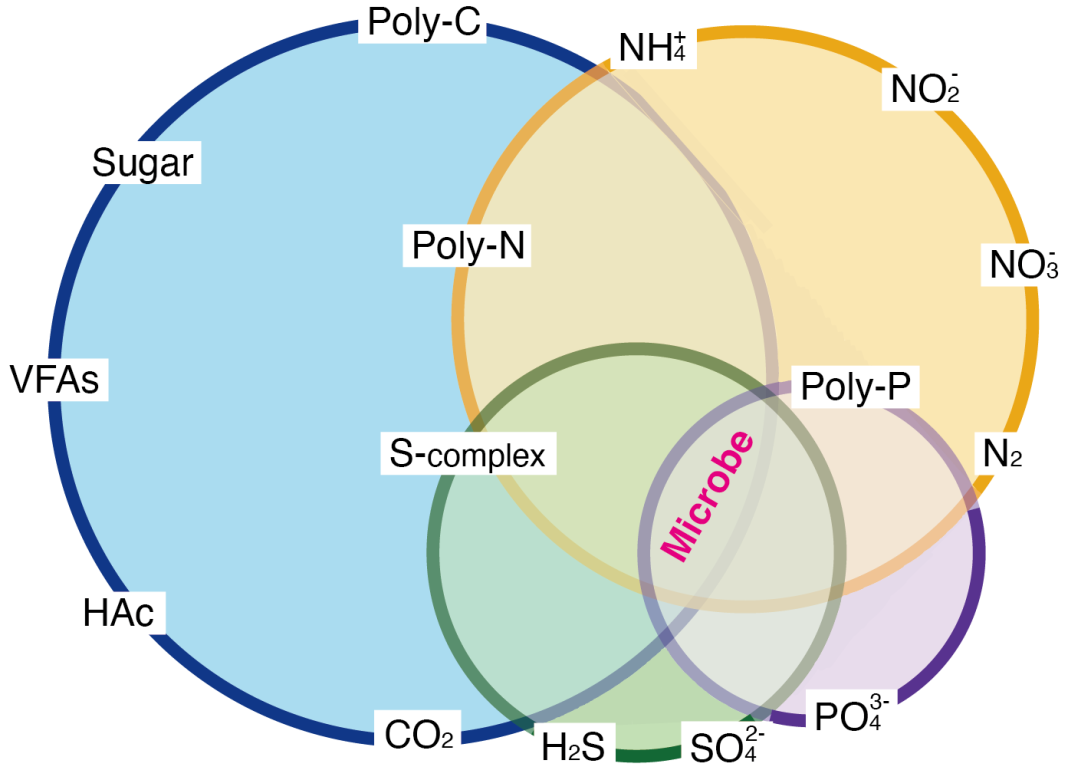Hui-Ping Chuang, Assistant researcher at the Sustainable Environment Research Laboratories of the National Cheng Kung University, shares insights into the vital role of microbes in waste removal and sustainable resource generation
Microorganisms thrive in various environments and catalyze complex reactions. They have a high potential to convert waste to useful resources through enzymatic reactions within the cell, particularly those involving the cycles of carbon, nitrogen, sulfur, and phosphate (Figure 1).
Different microbial families prefer various element-containing compounds as food and initiating cycles of catabolism and anabolism. Biogas and bio-compounds are the intermediates or final products as green resources during microbial transformation. Therefore, biotechnology based on microbial characteristics and functions is a valuable tool for both pollution remediation and sustainable resource generation.
Build-up of a suitable environment for functional microbes
A comprehensive microbial structure enhances the system’s treatment efficiency. Sponge media have been recommended as a useful tool for supporting various functional microbes within one system (as shown in Figure 2). This material was initially employed in the down-flown hanging sponge (DHS) reactor, developed around 1995 by the research group of Prof. Harada Hideki at Nagaoka University of Technology, Japan, for aerobically treating wastewater. The sponge media not only maintains sufficient microbial populations in the system by trapping particle sludge from wastewater but also supply provides an adequate growth period for the slow-growing microbes.
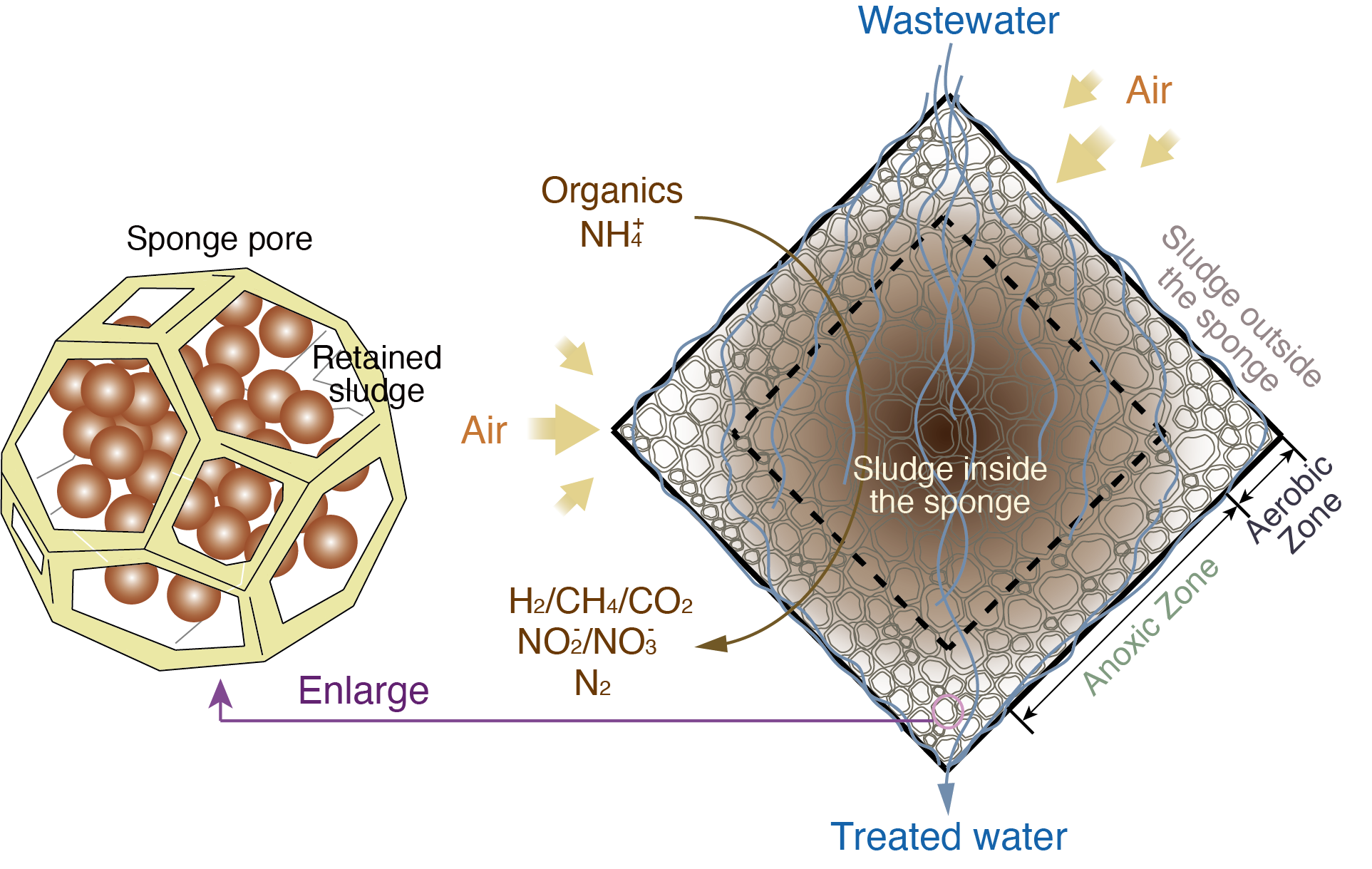
When substrate flows from outside the sponge into the inside, different functional microbes located at various layers of the sponge catalyze a series of reactions, resulting in a comprehensive microbial community.
Microbial system can generate various bio-products through enzymatic mechanisms. Popular biofuels such as bioethanol and renewable energy sources of hydrogen (H2) and methane (CH4) are formed through anaerobic carbon catabolism. Two types of biochemicals used in industries, citric acid and lactic acid, are produced from aerobic and anaerobic pyruvate transformation, respectively. Additionally, the available nitrogen (i.e. green NH3) could be further purified from active nitrogen (i.e. grey NH3) in wastewater under aerobic, anoxic, and anaerobic conditions.
To generate the desired resource, the oxygen (O2) level is a critical factor in adjusting carbon, nitrogen, sulfur, and phosphorus cycling routes.
Anaerobic Digestion for Waste Biosolid/Water
Anaerobic digestion is an effective strategy for biofuel generation. It is a complex process where a variety of microorganisms decompose organic matter, such as particles or dissolved matter in wastewater, excess activated sludge, and animal manure in an oxygen-free environment.
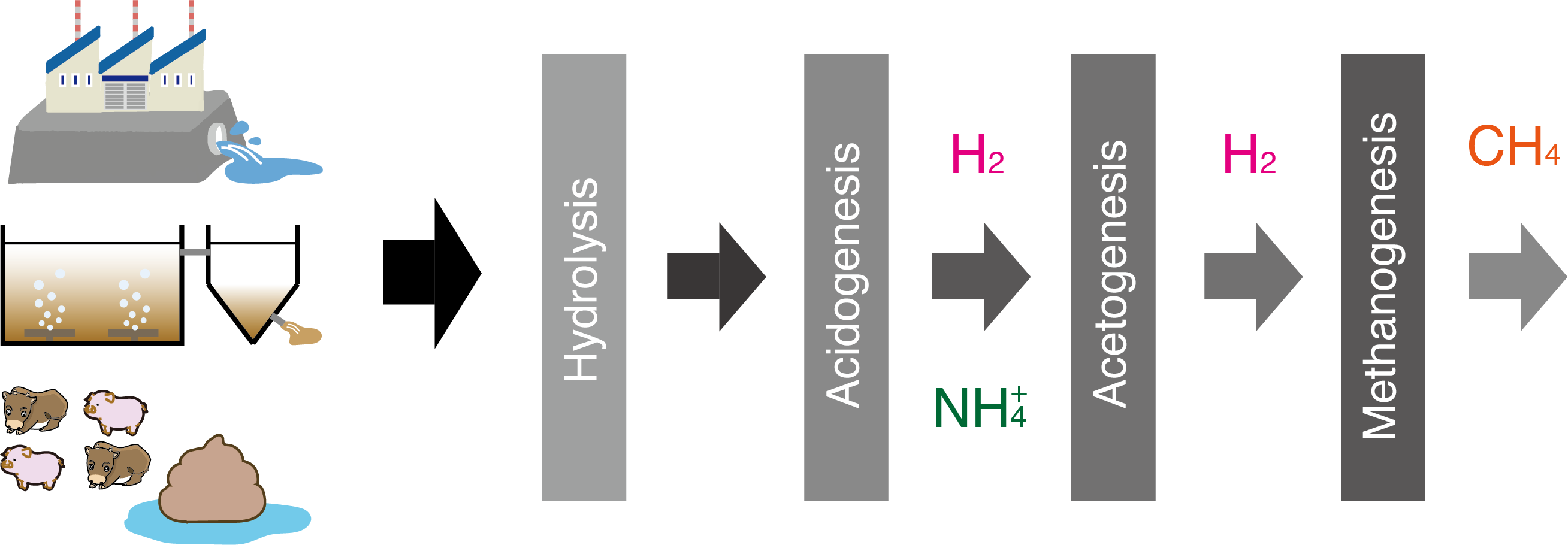
The process consists of four main steps: hydrolysis, acidogenesis, acetogenesis, and methanogenesis (as shown in Figure 3). This results in the production of high-calorific-value biogas, including hydrogen (H2) and methane (CH4), and digestate, a nutrient-rich substance containing ammonium (NH4+). When cattle dung is used as feedstock, about 0.13L of H2 and 313L of CH4 can be generated from every kilogram of total solids (TS), with a potential electricity output of 39.84 kW-hr.
Six targeted microbial families participate in the transformation of large molecular-weight organic wastes into renewable biogas. Specifically, 8×106 Copies/kg solid of hydrogen producers catalyze the formation of H2 through both acidogenesis and acetogenesis. Additionally, CH4 generation is induced by the activities of acetogenic methanogen and hydrogenic methanogen (as shown in Figure 4).
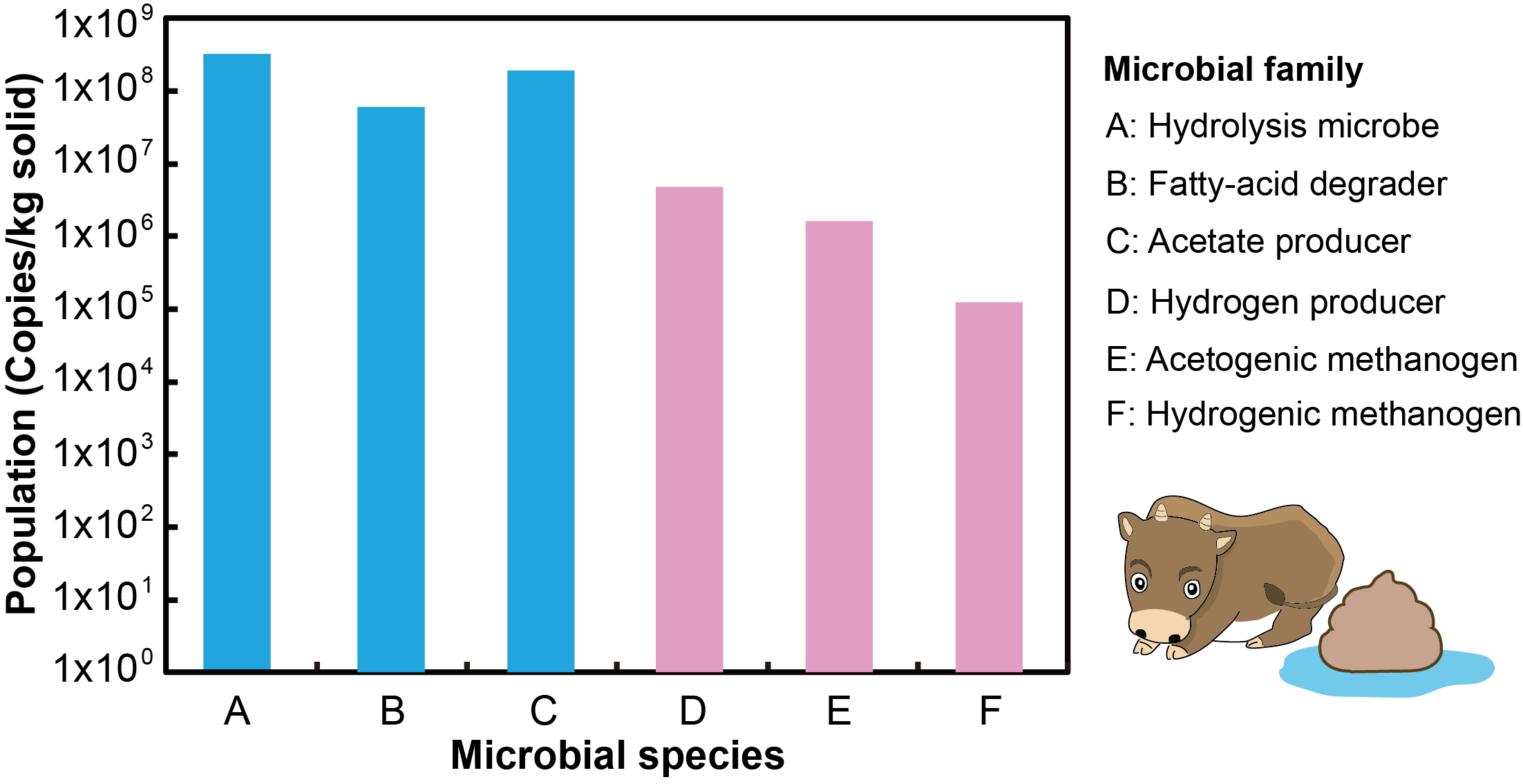
Nitrogen cycle in wastewater and agriculture
Microbes participate in the nitrogen cycle at different levels of O2 levels help transfer nitrogen availability, and are widely applied in wastewater treatment, animal husbandry, and agriculture. It involves various biochemical transformations of nitrogen that ensure its availability and removal in ecosystems. Ammonia (NH3) is mainly discharged from industrial wastewater and animal manure, while nitrous oxide (N2O) is primarily leaked from agriculture (Figure 5).
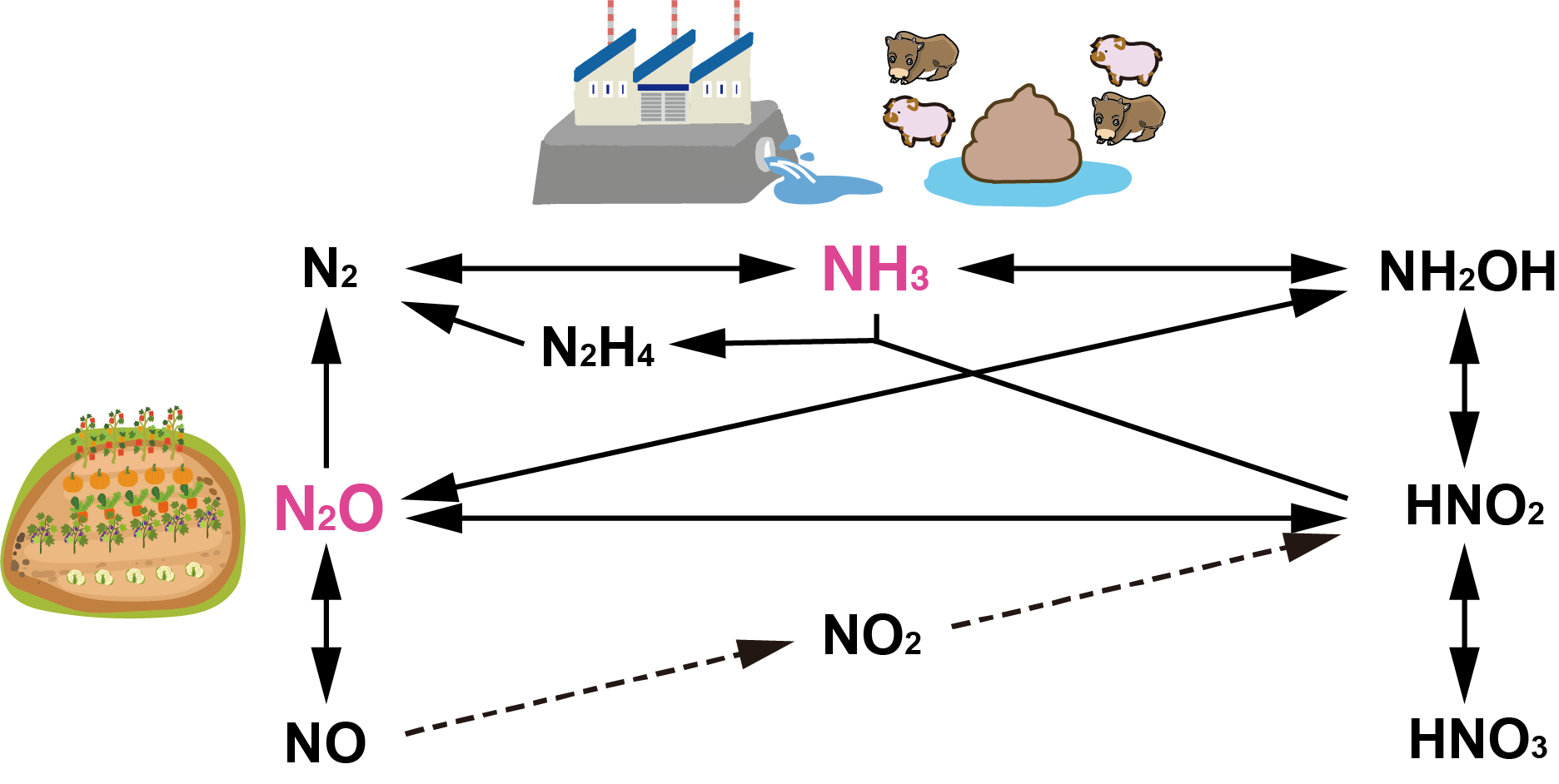
From the removal of nitrogen pollutants in wastewater, the choice between traditional nitrification-denitrification or energy-saving nitritation-anammox depends on the carbon-to-nitrogen ratio in the feed, with nitrogen gas (N2) as the final product. Conversely, high greenhouse-potential (GHP) N2O can be transformed into the precursors of nitrogen fertilizer (such as NH4+ and NO3 –) or N2 through oxidation or reduction reactions. Nitrogen gas can further be converted into the available nitrogen by plants or blue-green algae and continuing the nitrogen cycle.
Microbe thrive in various natural environments and can catalyze several biochemical reactions for biological waste degradation without producing secondary products. Sponge media is an effective tool for gathering various functional microbes in a system, helping establish a comprehensive microbial community. Anaerobic digestion is a critical process for producing the precursors of green energy, such as hydrogen (H2) and methane (CH4).
The co-occurrence of anaerobic fermentation generates biochemicals such as formic acid, ethanol, and volatile fatty acids. Additionally, the intertwined nitrogen cycle facilitates global nitrogen transformation, resulting in pollution remediation and nitrogen source reuse. In summary, microbes play an important role in waste removal and sustainable resource generation.

This work is licensed under Creative Commons Attribution-NonCommercial-NoDerivatives 4.0 International.

